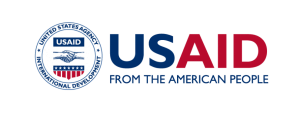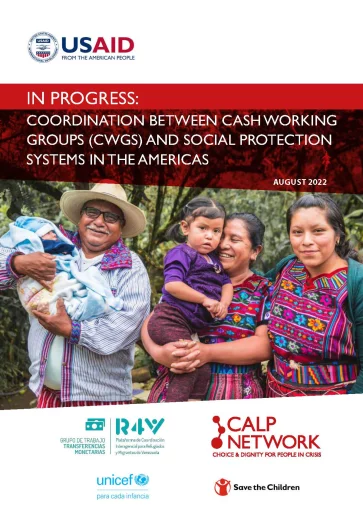In Progress: A Review of Forms of Coordination Between Cash Working Groups and Social Protection Systems in the Americas
This report provides a mapping of the initiatives and scope of coordination efforts aimed at linking humanitarian CVA with social protection in each country in the Americas that has a CWG or maintains similar coordination spaces.
In recent years, a joint effort has been promoted among various sectors to bring humanitarian cash and voucher assistance (CVA) closer to social protection systems. Understanding the progress, challenges and lessons learned about these coordination processes is key to obtaining quality programs that respond effectively to the needs of people in crisis and allow moving towards more sustainable forms of assistance and integration.
In response to this need, the Interagency Coordination Platform for Refugees and Migrants from Venezuela (R4V) and the CALP Network commissioned this report, which consists of a compilation of historical and current evidence on the coordination processes between Cash Working Groups (CWG) and government entities in charge of social protection systems in Latin America and the Caribbean.
This compilation seeks to provide the humanitarian sector with concrete recommendations based on the mapping of coordination initiatives in each country of the region that has a CWG or maintains other types of coordination spaces (i.e., working groups or thematic forums), aimed at linking humanitarian CVA with social protection, and that are part of the CALP network and/or the CWG-R4V.
The countries analyzed include Brazil, Colombia, Dominican Republic, Ecuador, El Salvador, Guatemala, Haiti, Mexico, Peru and Venezuela. In addition, this report presents three more in-depth case studies of CWGs in Colombia, Ecuador, and Guatemala.
Therefore, this document provides key information on:
- Trends regarding coordination between government actors in charge of social protection programs and the humanitarian sector.
- Evidence on how far coordination between the CWGs and national social protection systems has come.
- The challenges that exist on the humanitarian sector coordination side.

This publication is made possible by the generous support of the American people through the United States Agency for International Development (USAID). The contents are the responsibility of the CALP Network and do not necessarily reflect the views of USAID or the United States Government.
